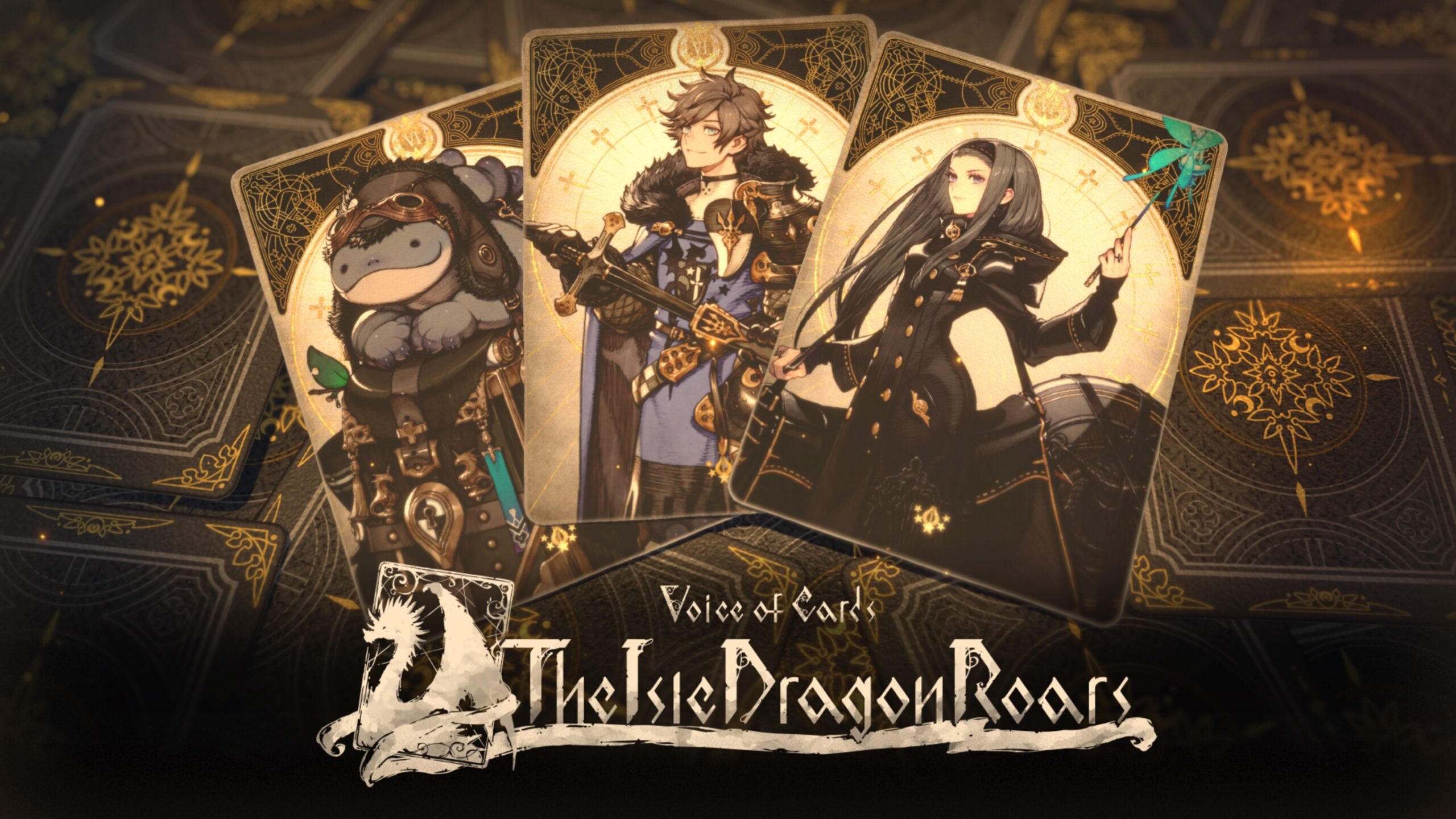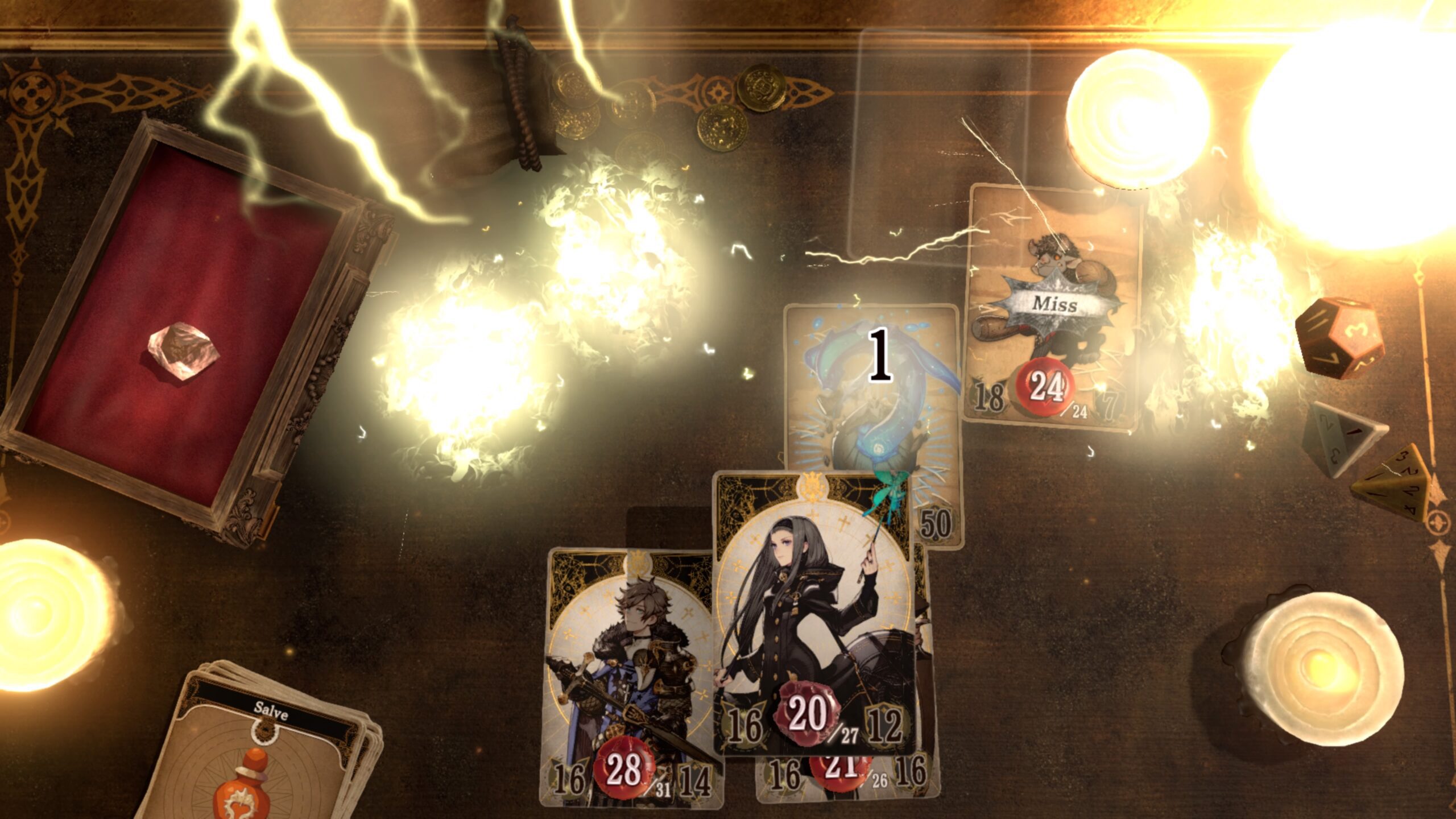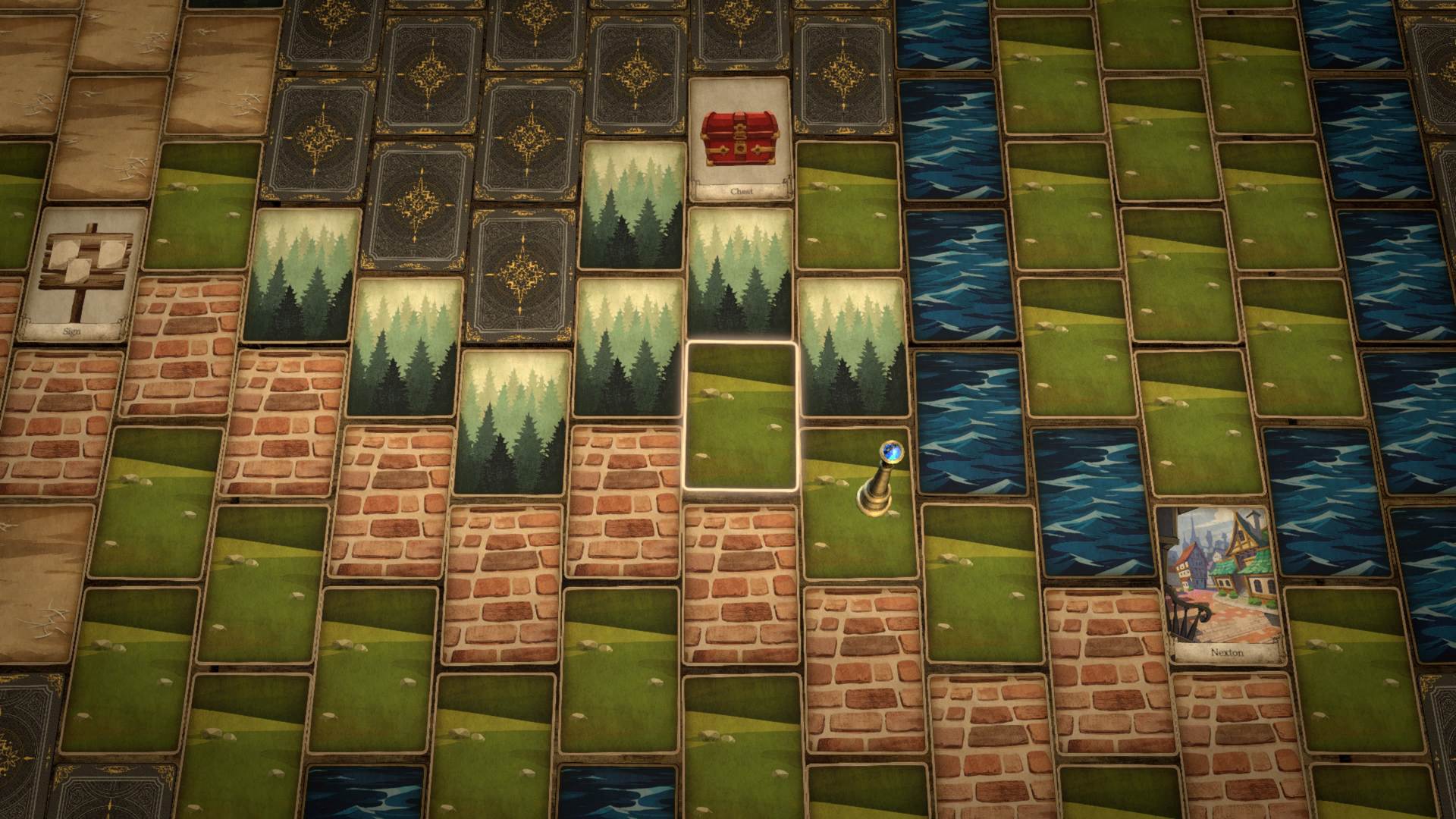We got to send questions over to the creative leads behind Square Enix’s card-based RPG
Voice of Cards: The Isle Dragon Roars launched last month as one of two fairly interesting and innovative role-playing games from Square Enix. Developed by Alim, the creative leads behind it are familiar to those who enjoy modern RPGs.
Nier and Drakengard lead Yoko Taro was joined by producer Yosuke Saito, character designer Kimihiko Fujisaka, and composer Keiichi Okabe to lay out the creative foundation for Voice of Cards. The result was a unique RPG that utilized cards in almost-tangible ways for everything, from menus and characters to the overworld map.
In the process of playing the game for our review, I had the chance to send over some interview questions for the team about the creation of Voice of Cards and the inspirations behind it. Check out the full Q&A below.
What was the inspiration behind the “everything is made of cards” style of Voice of Cards, and did it open up any interesting avenues of game design to explore?
Yoko Taro, Creative Director:
My friend, Kimihiko Fujisaka, who was enjoying his tropical life in Hawaii, suddenly said, “I have no more work!” and I couldn’t just leave him. So, I figured “Perhaps if I went with a game that involves illustrated cards, that would be easy for Mr. Fujisaka to create; and if we took advantage of a lucrative category, like a social game, then maybe Square Enix will accept my proposal…” and submitted my pitch.
That was the beginning of it. Then, Square Enix Producer Yosuke Saito said, “Games as a Service titles are tiring!” So, we turned it into a console game… and here we are. As for the game design, the younger staff at Alim worked hard on it, while I slept.
Kimihiko Fujisaka, Character Designer:
Based on Mr. Yoko’s idea, and “the general rule of thumb to depict everything as if we can recreate it all on an actual tabletop,” my overall art direction fell very much in line with that stipulation. As a result, I feel I was able to create artwork that was full of wonder—something that seems almost familiar, but never-before-seen.
Just like back in the days of the Nintendo Entertainment System, there definitely were elements of intrigue created because of the limitations we had; and with high-end production environments, which have relatively decreased the number of limitations, I thought it was a stimulating experience to deliberately put restrictions on myself when coming up with ideas. I feel that this gave me some new insight into how I can create new ideas when working on game production.
Are you fans of tabletop gaming, and if so, do you have any standout games or experiences?
Yoko Taro:
“I did play Tabletop RPGs back in high school, but I only played a little bit. At that time, I was surprised by the level of freedom they offered, and at the same time, at how poor my ability to communicate was. It felt like humanity was not ready for the challenge of TTRPGs yet…” At least, that’s how I responded to another media in regards to my tabletop game experience, as I was informed by a wonderful SQUARE ENIX Marketing Team member.
Yosuke Saito, Executive Producer:
I’ve loved them since I was a student, so it’s like a dream come true for me. Dungeons & Dragons, The Call of Cthulhu, Sword World, Roads to Lord, Traveler, so on and so forth… I played the heck out of them. After all, it was so much fun to imagine and create these various scenes and scenarios by ourselves.
Kimihiko Fujisaka:
While this might not be a Tabletop RPG, per se, I loved making text RPGs as a hobby when I was in elementary school. They were so much fun to make, but I never really actually played them. And, I don’t think I’ve ever had anyone play them, either.
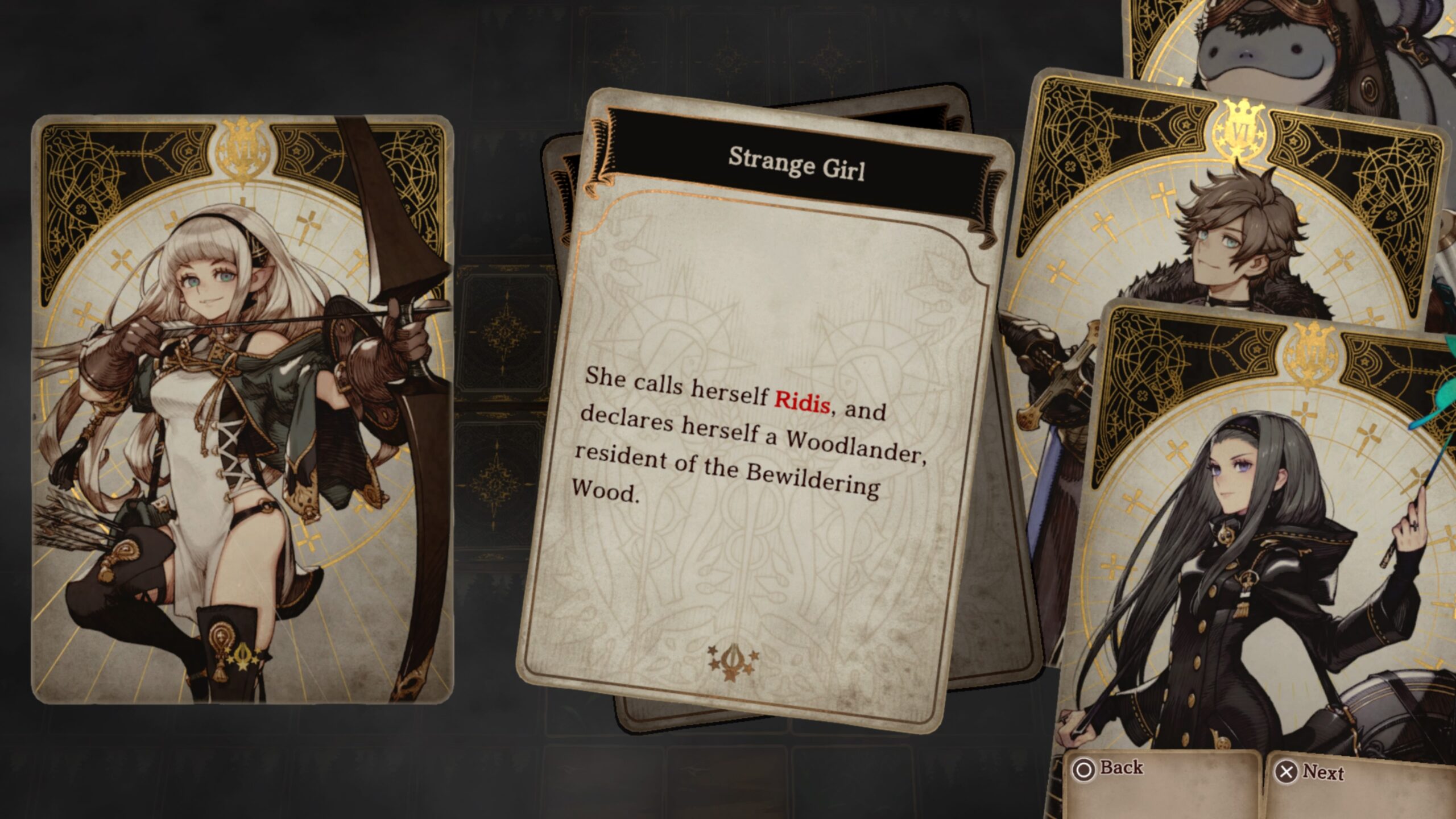
This creative team has collaborated on a number of games over the years, so what has made Voice of Cards unique among those collaborations for you? Did you try to make it stand out and feel unique from past collaborations, and how so?
Yoko Taro:
This is not an action game, which I was more accustomed to creating, but instead a turn-based RPG; and so, I was somewhat hesitant. As I did some research, I was able to reconfirm just how superior turn-based RPG of the past (such as Dragon Quest) were.
Kimihiko Fujisaka:
First, the fact that it’s not an action game is very unique. As for the artwork, I aimed for a wet and bright look, which is unusual for me.
Yosuke Saito:
This might be obvious at first glance, but, most of the components that make up this game are cards; perhaps that’s the element that has the most originality?
What was the inspiration behind the design of the characters, and were there any specific themes or concepts you wanted to capture with their look? Was it an interesting challenge, to design these characters as cards rather than fully 3D people?
Kimihiko Fujisaka:
I went into this with the mindset of trying to come up with our very own Dragon Quest I, and made a conscious effort to keep the designs very orthodox and in-line with classic fantasy. There are many games that recreate cards in a digital medium, especially if you include social games, so that made me strive all the more for a look that felt like analog cards.
I experimented with various compositions and adding/removing of background illustrations, and in the end, I was able to recreate the look of gold foil. That significantly pushed the look closer to what I wanted.
It was fun to figure out how to depict an in-game character with a single illustration, but it was also a challenge because I couldn’t give them more breadth, including movement, and it’s made me want to design 3D characters again.
How did you develop the idea of card stories and their flip sides, and did that open up any interesting narrative opportunities? Do you have a particular favorite card?
Yuuki Matsuo, Scenario Writer:
Adding a short story to characters and monsters was something I wanted to incorporate in place of Weapon Stories, which have become a familiar element with any works by Mr. Yoko Taro.
I would love for everyone to enjoy the wonderful artworks of Mr. Fujisaka, and I hope these stories would serve as a starting point to get a deeper understanding of this world, such as the unknown facts about how the monsters live, or the duality of the characters, etc.
As for my favorite card… well, I love them all.
Maasa Mimura, Director:
From the development team as well–there were comments about wanting something akin to Weapon Stories, if this is a title Yoko Taro was to be involved in. When we racked our brains about how to best depict this in our title, we arrived at the thought of having text on the front and back, which we felt was very appropriate, given these are all cards.
I love the ones that describe how much of a threat these enemies are, and so my favorite is the Slime.
On the music, how did you approach the soundtrack for this game, as one that’s on a tabletop scale rather than the much larger scale of games like NieR?
Keiichi Okabe, Music Director:
Throughout the NieR series, there were many action-packed sequences, and so the music was very intense at times; however, with this game, the gameplay moves at a much calmer pace, and so many of the tracks are calm in tone as well. Compared to a large-scale game, there are fewer songs overall, plus you’d have to listen to some of the songs for extended periods of time, so I was very cognizant about players not getting tired of hearing the same song and not to make the melody stand out too much.
What themes did you try to convey in the music of Voice of Cards, and what were some of the ways in which you did so?
Keiichi Okabe:
From looking at Mr. Fujisaka’s illustrations and receiving Mr. Yoko’s requests, I got a very Celtic vibe from them; and so, I wanted to express that through the music, in order for the people playing the game to be further immersed in that world.
Generally speaking, I was mindful about Irish and Celtic music, using as many acoustic instrument sounds as my foundation, plus I incorporated our unique musical sensibilities to create the atmosphere for Voice of Cards: The Isle Dragon Roars.
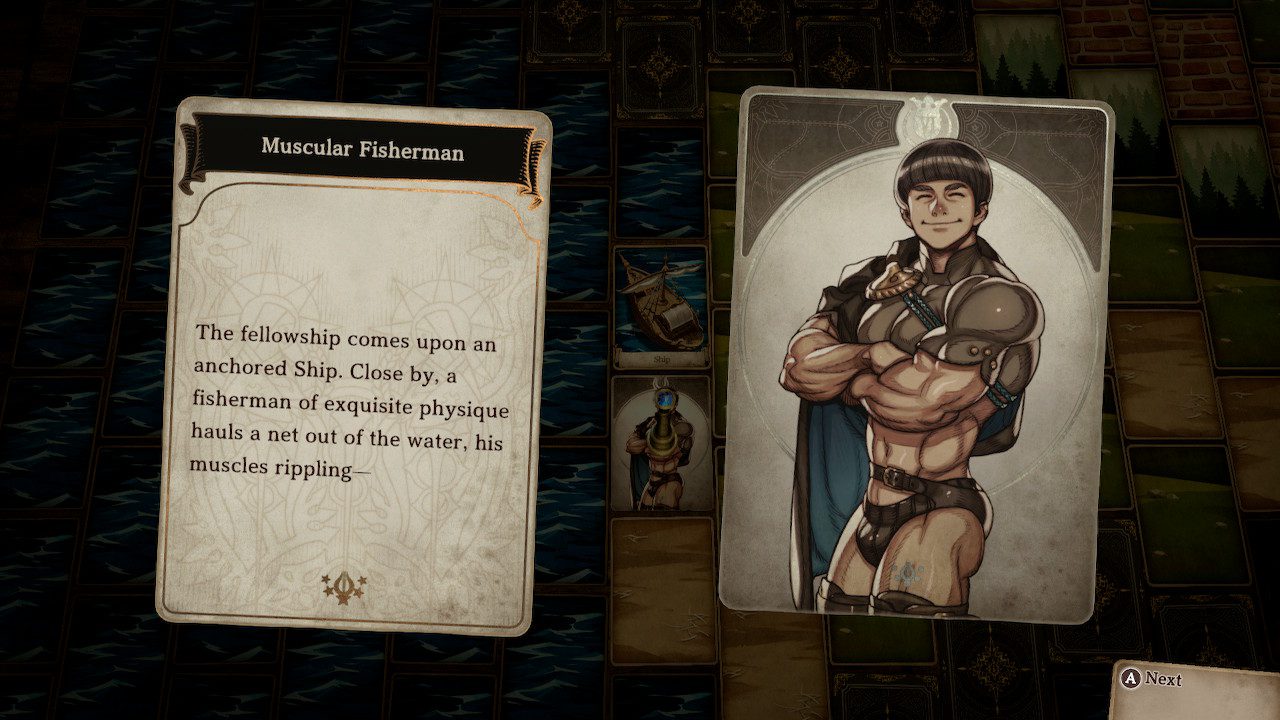
Voice of Cards: The Isle Dragon Roars is currently available on PC, Nintendo Switch, and PlayStation consoles.


